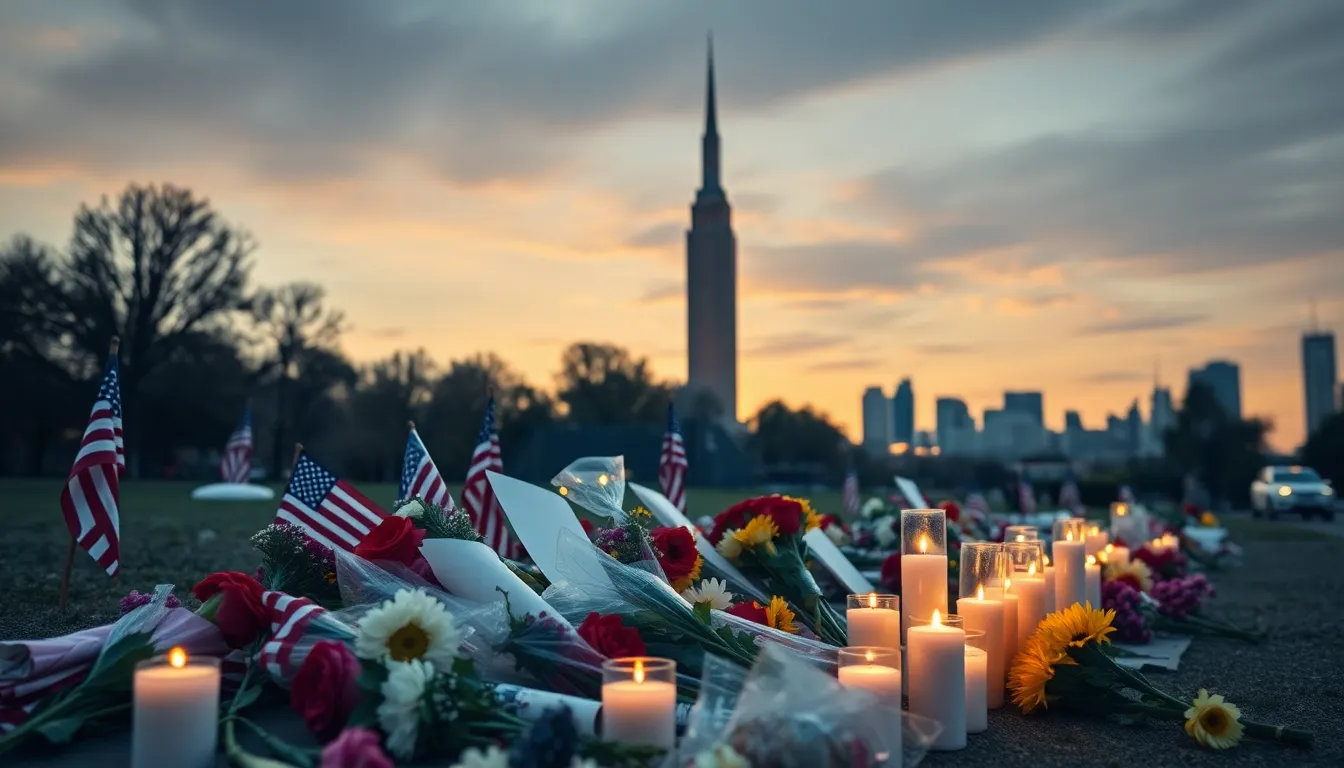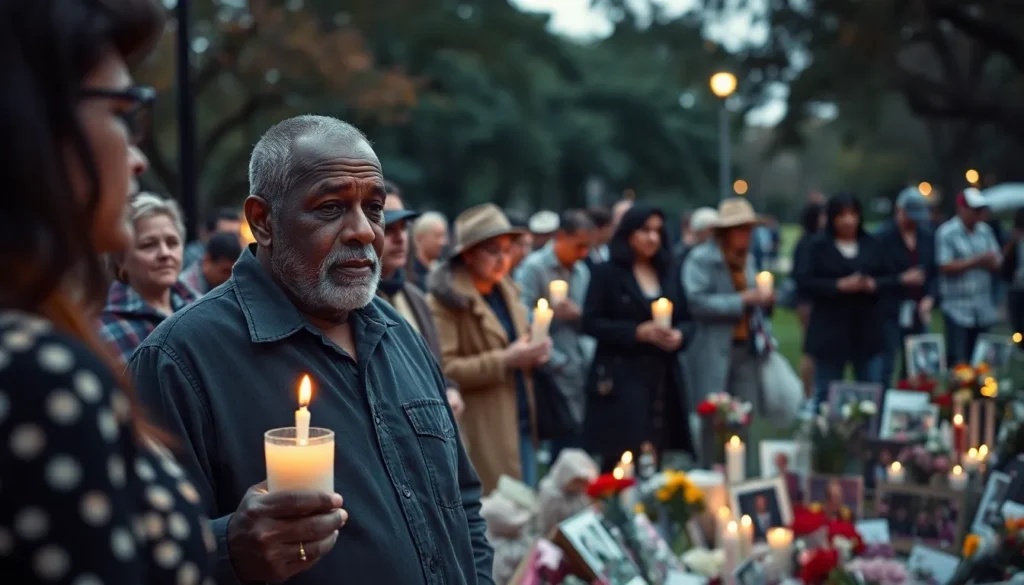In a country where the phrase “life, liberty, and the pursuit of happiness” is often tossed around like a frisbee at a summer picnic, it’s hard to believe that mass shootings have become a tragic part of the American landscape. With headlines flashing like neon signs and communities left reeling, this issue demands attention and action.
While some might think it’s just another day in the news cycle, the reality is far more sobering. Each incident leaves behind a trail of heartache, sparking debates that often feel like a game of hot potato—everyone wants to pass it on without truly addressing the root causes. It’s time to peel back the layers and explore the complexities of this crisis, because ignoring it won’t make it disappear. Let’s dive into the facts, figures, and narratives that shape this urgent topic.
Table of Contents
ToggleOverview of Mass Shootings in the US
Mass shootings represent a significant public safety issue in the United States. Data from the Gun Violence Archive indicates that there were over 600 mass shooting incidents in 2022 alone. The frequency of these events often astonishes communities, shaking their sense of security.
In 2023, mass shootings have continued, revealing a growing trend that demands attention. Specific locations, such as schools, workplaces, and public areas, frequently serve as sites for these tragic events. The impact on victims and families is immense, often leading to long-lasting psychological effects.
Statistics illustrate that the majority of mass shootings involve semi-automatic firearms. Approximately 60% of mass shootings comprise shootings where four or more individuals are injured or killed. This data underscores the urgent need for discussions surrounding gun control and access to mental health resources.
Legislation aimed at preventing mass shootings often encounters political challenges. Several states have enacted laws intended to reduce access to firearms for individuals deemed at risk. Advocacy groups emphasize the importance of comprehensive background checks and other preventive measures to mitigate these incidents.
Nationally, societal conversations often revolve around the causes and consequences of mass shootings. Many experts point to a combination of factors, including mental illness, cultural influences, and societal norms. Understanding these factors plays a crucial role in developing effective strategies to prevent future tragedies.
Research indicates that community-based interventions could help decrease the incidence of mass shootings. Programs focusing on conflict resolution and community engagement promote safer environments. Collaborative efforts among law enforcement, community leaders, and mental health organizations can create robust support systems to address this ongoing crisis.
Historical Context

Mass shootings in the U.S. have escalated significantly over the decades. Understanding the historical roots of this violence is crucial for addressing the ongoing crisis.
Early Incidents
Mass shootings date back to the mid-20th century, with notable events like the 1966 University of Texas tower shooting, which claimed 16 lives. This incident marked a pivotal moment in American history, as it brought national attention to gun violence. Early media coverage framed these tragedies as isolated cases rather than a growing epidemic. Other significant events, such as the 1984 McDonald’s shooting in San Ysidro, further shocked the nation, leading to increased awareness. Despite these early incidents highlighting the issue, comprehensive discussions about prevention remained minimal until more recent events.
Trends Over Time
Statistical data illustrates alarming trends in mass shootings. From 2000 to 2022, incidents surged, with over 600 reported in 2022 alone. Studies indicate a pattern of increased frequency and lethality in these violent episodes, often linked to the increased availability of semi-automatic firearms. As public spaces and institutions appear as targets, the psychological impact on communities intensifies. Legislative responses vary widely, with some states implementing stricter laws, while others resist change. Society’s evolving perception of gun rights and safety issues continues to shape the discourse surrounding mass shootings today.
Causes of Mass Shootings
Mass shootings in the U.S. result from a complex interplay of factors. Understanding these causes is vital for addressing the crisis effectively.
Mental Health Factors
Mental illness represents a significant contributor to mass shootings. Many perpetrators exhibit signs of severe mental distress, which often goes untreated. Studies indicate that approximately 25% of mass shootings involve individuals diagnosed with mental health disorders. Identifying and providing support for those at risk can reduce these tragic occurrences. Furthermore, stigma surrounding mental health prevents individuals from seeking help, complicating prevention efforts.
Societal Influences
Societal influences contribute to the increasing rate of mass shootings. Exposure to violence in media and video games normalizes aggressive behavior for some individuals. Many young people face socio-economic challenges, leading to feelings of hopelessness or aggression. Peer pressure also plays a role; individuals may feel compelled to conform to violent norms in certain communities. Additionally, the lack of strong community connections can exacerbate feelings of isolation or frustration, further increasing risk factors.
Impact on Communities
Mass shootings have devastating effects on communities across the United States. Psychological trauma impacts victims, survivors, families, and entire neighborhoods, creating a ripple effect that often extends beyond the immediate aftermath.
Victims and Survivors
Victims experience profound physical and emotional consequences. Many survivors face long-term psychological issues, including PTSD and anxiety. Statistics indicate that 40% of survivors show signs of chronic distress. Family members carry the burden of grief and loss, struggling to find normalcy in the aftermath. Resources for therapy and support groups can help, yet access often remains limited. Community resilience varies, with some communities mobilizing to support each other while others struggle with stigma and silence.
Changes in Legislation
Legislative responses to mass shootings reflect varying levels of urgency and effectiveness. Some states have enacted stricter gun laws, including universal background checks and red flag laws aiming to prevent firearms access for individuals deemed at risk. National advocacy groups campaign for comprehensive reforms to ensure public safety, but political opposition can hinder progress. Legislation evolves, shifting with public sentiment and advocacy efforts; 28 states have adopted significant gun control measures since 2018. Increased call for accountability in gun sales highlights community demands for safer environments.
Prevention Strategies
Effective prevention strategies address mass shootings through various policy measures and community initiatives. Each approach plays a crucial role in reducing incidents and creating safer environments.
Policy Measures
Legislative actions remain vital for preventing mass shootings. States that impose stricter gun laws see a reduction in firearm access for at-risk individuals. Comprehensive background checks, advocated by groups nationwide, can prevent dangerous individuals from obtaining weapons. Data shows that states with red flag laws experience a decline in gun-related fatalities. Support for mental health resources enhances early intervention, where timely access to treatment can mitigate risks. Federal legislation focused on closing loopholes further strengthens safety protocols. Developing a national database for tracking firearm purchases and ownership promotes accountability and responsible gun ownership.
Community Initiatives
Community-based programs foster collaboration among local organizations to reduce mass shooting incidents. Schools can implement conflict resolution programs, equipping students with skills to manage disputes effectively. Mental health workshops raise awareness and reduce stigma, allowing individuals to seek help without fear. Local law enforcement agencies work alongside community leaders to build trust and improve communication. Neighborhood watch programs empower residents to monitor and report suspicious activities, enhancing safety. Engaging youth organizations in mentorship initiatives helps build strong connections and reduces feelings of isolation. Overall, proactive community involvement creates a supportive environment, effectively addressing the root causes of violence.
The issue of mass shootings in the U.S. demands urgent attention and thoughtful action. It’s clear that addressing this crisis requires a multifaceted approach that includes legislative reform and community engagement. By fostering open discussions about mental health and societal influences, communities can begin to unravel the complexities surrounding these tragic events.
As advocacy for stricter gun laws and better mental health resources continues to grow, the collective responsibility lies in creating safer environments. Each voice matters in the pursuit of understanding and prevention. Only through collaboration and commitment can society hope to reduce the frequency of mass shootings and heal the wounds left in their wake.





